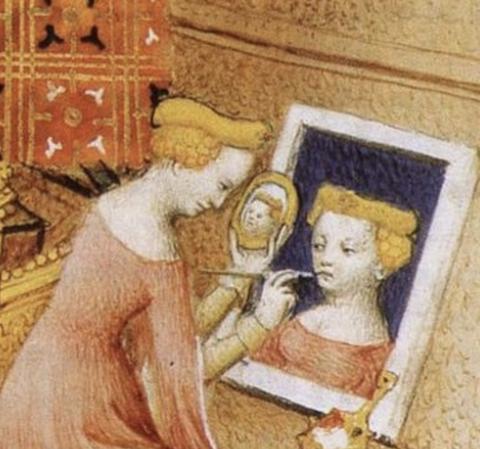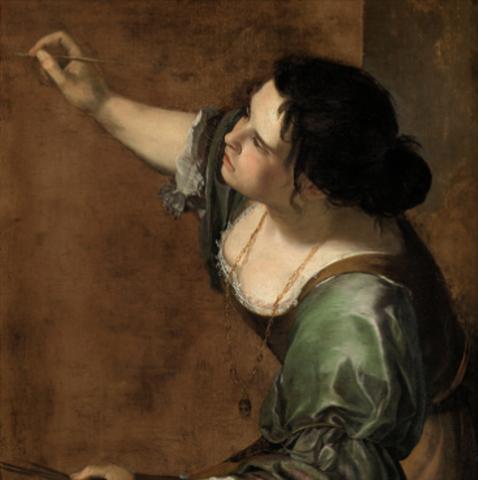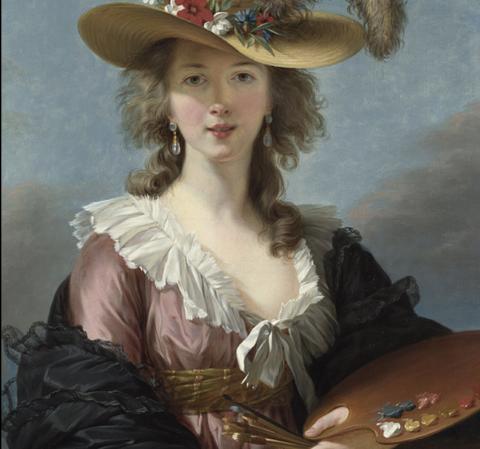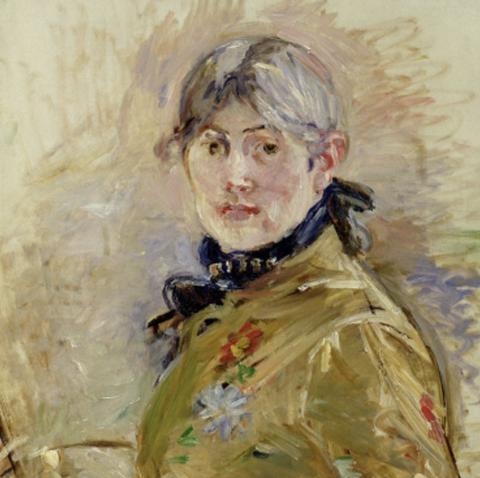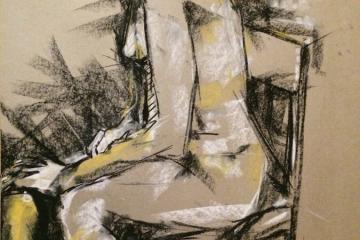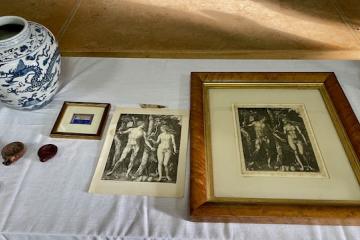TAS Kington Langley provide materials for life drawing classes at Rag and Bone Art School
Where have all the women gone? Putting Self-Portraits of Women back in the Frame
Where have all the women gone? Putting Self-Portraits of Women back in the Frame
13 Jan 2025
Lecture by Aliki Braine
The Arts Society Horsham 8 January 2025
Winter might have put us in a deep freeze on this frosty January morning, but members of the Horsham Arts Society arriving at the Brighton Road Baptist Church soon warmed up to a buzz of excitement for their first lecture of the year.
Aliki Braine launched straight into the lecture about women artists with some urgency for there were centuries of prejudice and injustice to be redressed. Despite the overwhelming evidence that line drawing of portraiture and self-portraits were first practised by women, and the many celebrated women artists who followed the footsteps of Marcia from antiquity to Eva Gonzales in the 19th Century, the acknowledgement and recognition of their achievement in the history of Western art has, at best, been precarious or worst, relegated to obscurity.
We heard about the stories of eminent women artists such as Sofonisba Anguissola, Lavinia Fontana, Michaelina Wautier, Artemisia Gentileschi, Angelica Kauffman, Mary Moser and Berthe Morisot through the centuries, working from the margin of a patriarchal society in earning their merit as a professional artists. Often their fame and recognition were conferred onto the men around them, as in the case of Michaelina whose artistic attribution went to her brother and her own name obliterated. Despite being the founding members of the Royal Academy, Angelica Kauffman and Mary Moser were denied membership on grounds of their gender.
However, women artists continued to champion their destiny. Studying the self-portraits presented, it dawns on the viewer what is gazing back at them is a message of protest and defiance - with their pencil in hand, poised at the easel - the composition is a political statement. Ironically, this goes beyond creating a likeness or mimicry of real life for which they were permitted to receive the training. These self-portraits, sometimes painted with flowing locks and indecorous open mouth can be seen as a battle cry for gender equality - for recognition of their talent and achievement in their own right.
The most poignant and powerful depiction of this struggle has to be the self-portrait by Artemisia Gentileschi whose life was ruined as a victim of rape. She was subjected to torture at the trial and thereafter abandoned by society as “damaged good”. In this defiant self-portrait, Artemisia is posed in front of the easel, her sleeve rolled up and with pen in hand ready to create. She appears to summon all her might and determination to fight the indignity and injustice she has endured. The symbolism of the continuing struggle for many more women artists is not lost on the audience. It is time that women artists are back in the frame and Aliki ends her lecture succinctly when she says “a place in the camp is well deserved” and one might add “well overdue”.
- Braine
- women
- horsham
JOIN OUR MAILING LIST
Become an instant expert!
Find out more about the arts by becoming a Supporter of The Arts Society.
For just £20 a year you will receive invitations to exclusive member events and courses, special offers and concessions, our regular newsletter and our beautiful arts magazine, full of news, views, events and artist profiles.
FIND YOUR NEAREST SOCIETY
MORE FEATURES
The Arts Society Kington Langley kicked off 2025 with local lecturer and Antique Roadshow presenter Marc Allum.


